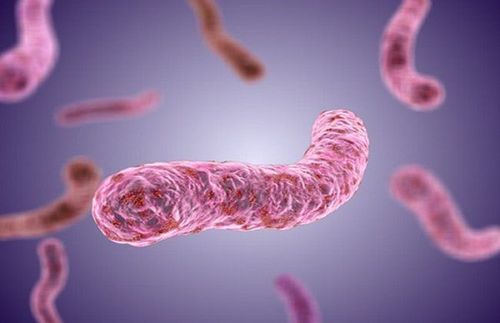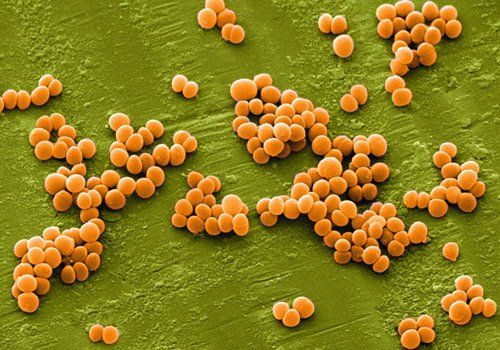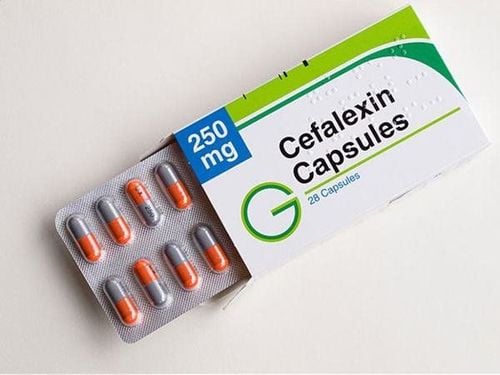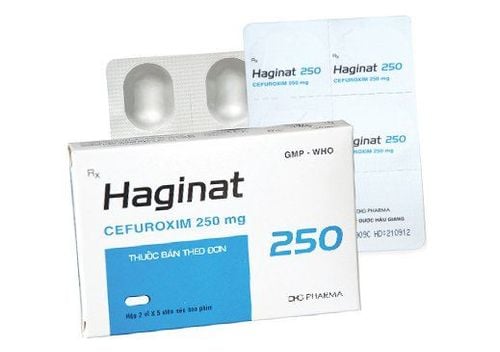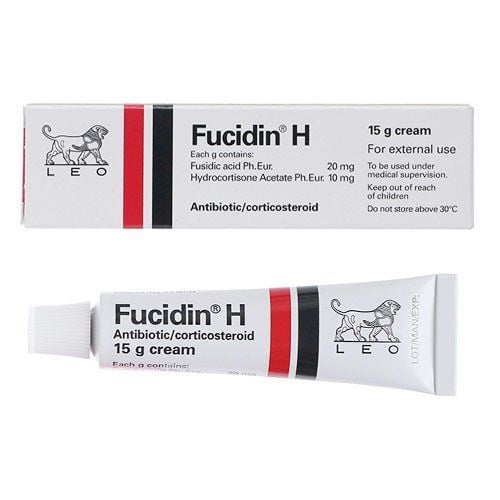This is an automatically translated article.
As soon as the lesions are suspected of scalp impetigo, parents need to wash the child's wound with clean water. Then apply antibacterial drugs in the form of solutions such as 2% eosin red, potassium permanganate several times a day. If the treatment of impetigo does not show signs of improvement, it is necessary to take the child to the doctor for treatment, to avoid dangerous complications.
1. What is impetigo?
Impetigo is a superficial skin infection. The most common causative agent is Staphylococcus aureus, S.aureus, less commonly group A hemolytic streptococci.
The disease is common in children, especially those under 6 years old, who are at the age of going to kindergartens and kindergartens. The disease is very easy to spread through direct contact from infected skin areas to healthy skin areas on the same child or from one child to another. Therefore, it is necessary to detect and treat children early to avoid spreading to friends.
1.1. Manifestations of staphylococcal impetigo in children Impetigo in children is caused by staphylococcus aureus, which is a typical bullous impetigo on the skin, easily confused with chickenpox.
Other manifestations include:
When infected, the child may have a fever if the impetigo is widespread. However, care should be taken to exclude fever due to dangerous diseases or fever due to complications of impetigo; On the child's skin will appear blisters, blisters containing clear yellow secretions on the background of red or normal skin. Lesions often progress quickly, spread, and when broken, leave a scab on the skin with honey yellow scales Location: Usually appear around natural cavities such as nose, mouth, buttocks, hands and feet . 1.2. Manifestations of streptococcal impetigo This case is less common, caused by group A hemolytic streptococci.
The child will develop blisters and pustules, but they will bruise or slide very quickly without increasing in size to become a blister, so this case will not have the typical blisters. Lesions appear scaly skin, so this case is easily confused with fungal skin diseases caused by filamentous fungi. Honey-yellow secretions appear in natural cavities, often around the nasal passages, mouth and limbs of children.
2. Diagnosis of impetigo in children
Diagnosis of children with impetigo and skin disease is based mainly on clinical evidence because the skin lesions are so characteristic.
Also can confirm by gram stain or culture to identify bacteria.

Bệnh chốc lở ở trẻ em có thể dễ dàng chẩn đoán qua lâm sàng
3. Treatment of impetigo in children
3.1. Treatment of impetigo in children at home As soon as the lesions are suspected of impetigo on the scalp, parents need to wash their children's wounds with clean water. Then apply antibacterial drugs in the form of solutions such as 2% eosinophilic red, potassium permanganate several times a day while the lesions are bleeding. Then, when the lesion is dry, apply fucidic acid cream (Fucidin) or Mupirocin 2% ointment (Bactroban) twice a day when the lesion is dry.
3.2. Treatment of impetigo in children at the hospital If treating impetigo and scalp inflammation in children for a few days but the disease has not subsided or progressed to spread to the whole body, you should immediately visit a doctor for examination and treatment, to avoid leaving complications. The doctor will treat with:
Systemic antibiotics for children, usually using 1st generation Cephalosporins, Amoxicillin + Clavulanic Acid divided into 2-3 times/day. Use antihistamine if itching: Phenergan, Loratadin... If impetigo is resistant, it must be treated according to the antibiotic chart. If there are complications, attention must be paid to treating the complications.
4. Complications of impetigo in children
Complications of impetigo in children include:
Impetigo: From blistering lesions, slip then ulcerate and gradually spread. Impetigo when healed will leave scars, so parents should limit children scratching due to itching because it will cause damage to spread or appear new lesions. Because impetigo is very contagious. Acute glomerulonephritis is a dangerous complication of impetigo caused by group A hemolytic streptococci infection, usually occurring 3 weeks after impetigo. Staphylococcal scalded skin syndrome is caused by the exotoxins of staphylococcus aureus causing the skin to become red and scaly. Severe sepsis, high fever, systemic symptoms. Hospitalization is required for treatment.

Bệnh chốc lở ở trẻ em có thể gây biến chứng nhiễm trùng huyết sốt cao
5. Prevention of impetigo in children
The best measure to prevent impetigo in children is:
Maintain good hygiene, wash hands often and cut nails short.
The house is cool, the clothes are light and airy, sweat-absorbent, avoid exposing the skin much to cause disease and spread. Drink enough water. Avoid staying in humid places for a long time, lack of light, letting insects sting. Treat early and actively, avoid rubbing, scratching much causing complications. Impetigo is very contagious because lesions often cause itching, children touch the lesions in this place and then spread it to other places on the body. Therefore, when children have impetigo, parents should let their children stay at home to control and prevent complications and limit the spread to other children.
In the case of home treatment for the child but no improvement, parents should take the child to a medical facility for examination and treatment. Currently, the Pediatrics Department at Vinmec International General Hospital is trusted by many parents to examine the diseases that babies and children have. Vinmec brings satisfaction to customers and is highly appreciated by industry experts by:
Gathering a team of leading pediatricians: including leading experts with high professional qualifications ( professor, associate professor, doctorate, master), experienced, worked at major hospitals such as Bach Mai, 108... The doctors are well-trained, professional, conscientious - understanding and understanding young psychology. Besides domestic pediatricians, the Department of Pediatrics also has the participation of foreign experts (Japan, Singapore, Australia, USA) who are always pioneers in applying the latest and most effective treatment regimens. . Comprehensive services: In the field of Pediatrics, Vinmec provides a series of continuous medical examination and treatment services from Newborn to Pediatric and Vaccine,... according to international standards to help parents take care of their baby's health from birth to childhood. Advanced techniques: Vinmec has successfully deployed many specialized techniques to make the treatment of difficult diseases in Pediatrics more effective: neurosurgery - skull surgery, stem cell transplantation blood in cancer treatment. Professional care: In addition to understanding children's psychology, Vinmec also pays special attention to the children's play space, helping them to play comfortably and get used to the hospital's environment, cooperate in treatment, improve the efficiency of medical treatment.
Please dial HOTLINE for more information or register for an appointment HERE. Download MyVinmec app to make appointments faster and to manage your bookings easily.





